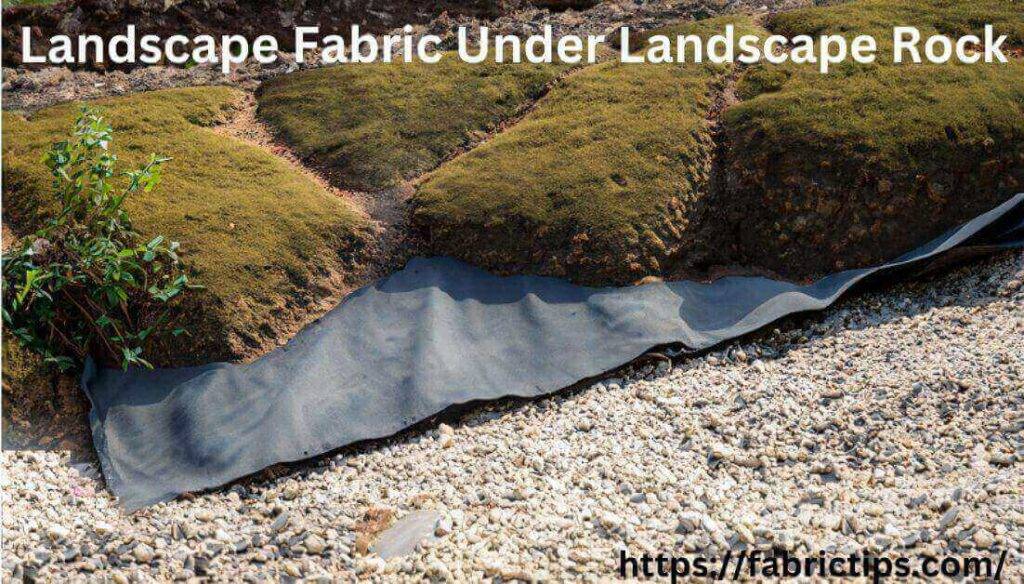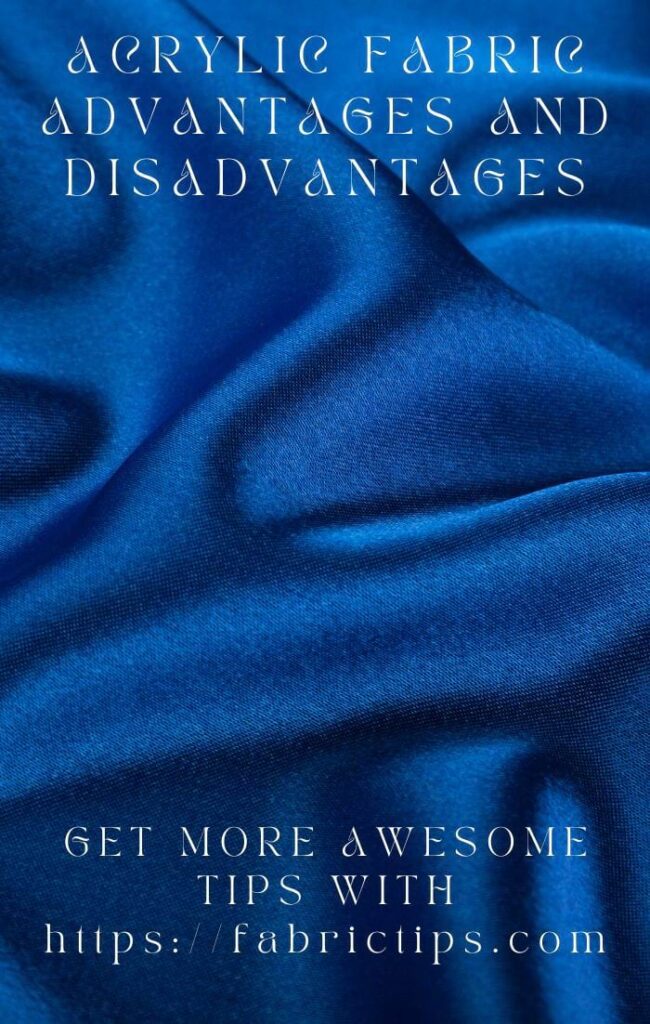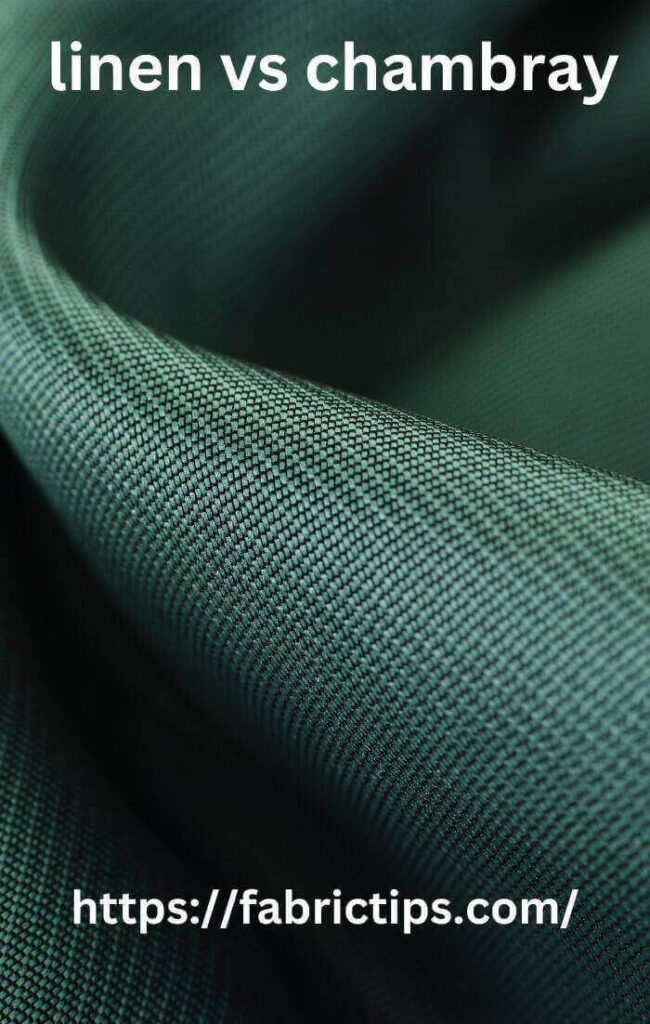Last Updated on December 13, 2025 by Wahid
To enhance your landscape, garden, flower bed, or yard in general, decorative rocks are both useful and attractive. Mulch and ornamental plants can both enhance the aesthetics of your garden.
However, why do you need landscape fabric under landscape rock? In rock-based landscaping, landscaping fabric is a great base for your rocks. Therefore, it’s easier to clean, and it won’t mix with soil or smaller rocks. Although landscaping fabric suppresses weeds, maintains soil temperature, & prevents erosion, it isn’t always needed under rocks. Mulch & soil particles can block the fabric, resulting in drainage problems.
This article will go into greater depth about a guide to landscape fabric installation under rock. This includes the advantages and disadvantages of landscaping fabric, as well as when to use it. These instructions will help you apply an underlay to rocks, garden stones, or other inorganic ground coverings.
Landscape Fabric: What Is It?

- In geotextiles, landscape fabrics are usually made of polyester, linen, polypropylene, or other recycled materials.
- Among its primary purposes, it prevents weeds from growing in garden beds, around trees, and on gravel ground coverings.
- Additionally, the fabric prevents erosion, limits evaporation, regulates soil temperature and reduces herbicide application.
- Almost all landscape fabrics enable water & oxygen to reach the soil and root systems.
- There are a wide variety of landscape fabrics, such as weed-blocking fabric, garden fabric, landscaping fabric, and fabric for controlling weeds.
Why Should I Use Landscape Fabric Underneath Rocks?

- In planting beds, landscape fabric offers both pros and cons. Under rocks, however, the weed barrier offers many advantages.
- As the soil settles, small rocks seem to be incorporated into it. As stones sink into the ground, removing them becomes difficult, and digging becomes more challenging.
- Landscape fabric provides a barrier between soil and rocks.
- Whenever it’s time to dig out the stones, they can be shoveled off the covering instead of being dug up.
- Hence, weeds cannot grow between the tiny stones because of the fabric.
- The beauty of a river pathway with rocks can quickly be lost to weeds when they grow too quickly. Is it worth spending the weekend pulling weeds?
How To Install Landscape Fabric Under Landscape Rock: 7 Simple Steps
Your landscaping project should begin with landscape fabric installed before adding rock or gravel. Looking for the perfect way to install it? You can rest assured that you will find the 7 effective solutions below.
Step 1: Measure The Project Area & Size
It is critical to determine the amount of fabric you’ll need for your project before you begin. If so, make sure you calculate the length & width of the space where your fabric will be installed.
Step 2: Prepare The Area
When you’ve figured out how much landscape fabric you’ll need, it’s time to prepare the area. As part of this process, you should remove any vegetation, debris, or roots from the working area.
- Take out the weeds
- Ensure the soil is level
- Dispose of the debris
- Add soil supplements
Step 3: Lay Out The Fabric & Cut It To Size
After you have prepared the area, the fabric can be rolled out or laid out. Whenever you use a roll of landscape fabric, make sure to unroll it and lay it flat.
Now, lay out your fabric sheet flat if you are using one. Then, as soon as the fabric has been placed, cut it to size with a sharp scissors or a knife.
Step 4: Staple The Landscape Fabric In Place
Once the fabric has been cut to an accurate size, it needs to be attached to the frame. A landscape staple, nail, or pin can be used for this purpose.
The fabric should be stapled or nailed down on one side. Then, stapling or nailing down the opposite side of the fabric. At last, proceed around the outer edge of the fabric, making sure to staple or nail it down.
Step 5: Create X Shapes On The Fabric For Future Plants
When the fabric has been secured in place, cut an X-shaped opening in the fabric so that future plants can be inserted.
When you are ready to begin, first cut an X-shaped pattern with a sharp knife or scissors. Depending on the plant’s size, the opening will be different.
Step 6: Wrap Landscape Fabric Around The New Plants & Staple Them
As soon as you have cut the apertures for the new plants, adjust the fabric to fit around the plants after they are installed. Basically, the landscape staples will need to be used to secure it.
Step 7: Spread Landscape Fabric Evenly Over Rock Or Mulch
Once all the plants and fabric are in place & secured, mulch, rocks, & soil can be added.
In order to get the best results, make sure the gravel or mulch is evenly laid across the landscape fabric.
Finally, ensure that the fabric is completely covered with soil, vegetation, or rock. In this way, weeds won’t be able to grow through the landscape fabric.
Landscaping Fabric Under Rocks: Benefits

Your yard work can be reduced when you add landscaping fabric, so you can spend more time enjoying your garden. Under your rocks, heavy duty landscaping fabric provides the following benefits:
Weed Suppression
As with all flowers on your land, weeds thrive in ideal growing conditions (despite being more persistent). To germinate and thrive, they require sunlight & nutrient-rich soil. With landscaping fabric beneath your rocks, water and sunlight cannot reach weed seeds, making them less likely to grow.
Regulating Soil Temperature
In addition, the fabric regulates soil temperature by blocking sunlight in the hot summer and insulating it in the cold winter.
Water evaporation is also controlled, ensuring that your plants’ roots remain moist. By doing so, you will spend less time watering your plants, which will reduce drought stress.
Preventing Soil Erosion
When your yard slopes or you have heavy rainfall, you can prevent soil erosion with landscaping fabric. As a result, sediment is trapped and won’t wash away, causing rocks to shift and become loose.
Less Material Means More Savings
Gravel paths are typically laid 4 to 6 inches deep by landscapers. In the case of mulching plantings with gravel, a depth of 4 inches is more typical. By installing a high-quality landscape fabric in the soil & gravel, you can cut the depth in half.
A fabric surface provides more uniformity for laying out aggregate. Soil underneath will lose less rock material as a result. Rock aggregate is only needed in half the amount, resulting in savings.
The Filter Effect
Gravel used in gardening or landscaping is not always used as mulch or for pathways. In some cases, gravel is installed to control drainage and water flow. Regardless of the case, fabric plays an important role in creating such systems as:
- Trench drains
- French drainage systems
- Bedding of dry creeks
- Water features
Landscaping Fabric Under Rocks: Drawbacks

In addition to the many benefits of landscape fabric, it also has a few drawbacks. The following are some drawbacks of landscaping fabric:
Not Permanent
Fabrics used for landscaping are not permanent solutions. As time goes on, the product will degrade & break down, requiring replacement. Depending on the fabric’s construction and the way it’s installed, its lifespan can vary.
Can Clog Drains
Decomposing mulch & soil particles can clog the fabric, which will lead to drainage problems. The landscape fabric’s surface will pool water and prevent it from permeating the soil. As a result, your plants may die due to waterlogged soil.
Harmful For Plants
In addition to regulating soil temperature & moisture, it may also negatively affect the health of your plants. By covering your plants with fabric, air & water are prevented from accessing their roots, causing them to rot.
Despite landscaping fabric’s ability to reduce weed growth, existing weeds cannot be killed by it. Your landscape will look better if you remove them manually.
A Guide To Using Landscaping Fabric Under Rocks

When should you use landscaping fabric? You will need to take into account your landscape’s unique needs. In the following instances, landscaping fabric might be useful:
You Have Sloped Yard
Using landscaping fabric on sloped yards can prevent erosion & soil loss. Your plants become deprived of nutrients due to soil erosion, which can result in your rocks shifting and becoming loose. Furthermore, it can lead to mudslides due to heavy rains, causing damage to your landscaping & even injuries.
You Have Weeds
An overgrown lawn can quickly become unmanageable due to weeds. These insects deplete your plants of nutrients, making them difficult to eradicate. A landscaping fabric placed under your rocks prevents weed growth using sunlight & water.
You Have Loose Soil
Landscapes with loose soil often have problems with stability. When heavy rains or winds blow, loose soil can be quickly washed away. As a result, your rocks can shift and loosen, causing root damage to your plants. Fabric for landscaping can hold soil in place and keep it intact without washing away.
However, despite the drawbacks, I prefer to use landscape fabric whenever I am laying rocks for flower beds or landscaping work. The task of weeding can be extremely time-consuming. Although it can’t be mowed over, it can significantly reduce weed growth.
Tips For Using Landscaping Fabric Under Rocks

Whether you plan to apply landscaping fabric or not, make sure you install it correctly to avoid problems.
Select The Right Fabric
Fabrics used in landscaping are not all created equal. Choosing a durable & breathable material is essential for preventing drainage and circulation problems.
Properly Install It
For the best performance out of your landscaping fabric, the installation must be done correctly. Make sure the area is free of rocks, debris and weeds, after which the soil should be leveled and mulched. After this, lay the fabric atop the area and secure using landscape staples or pins. Next, add rocks to the fabric.
Regularly Check It
No matter how well landscape fabric is installed, it will not last forever. Make sure you inspect it regularly to prevent wear & tear. Eventually, the fabric will have to be replaced if it begins to break down.
Landscaping Fabric Types Under Landscaping Rock
Landscaping fabrics come in 4 main varieties today, which include woven, non-woven, spun, and perforated. Well, let see details below:
Woven Landscape Fabric
[amazon box=”B09S3CHP2X” description=”none”]Fabric made of interlocking strands and overlapped strands, usually polypropylene, which is heat-pressed to preserve its durability. However, durability is reduced, but permeability is increased.
Non-Woven Landscape Fabric
[amazon box=”B07SCZXPTR” description=”none”]Polyester or polypropylene bonded threads usually used in landscape fabrics. It has a higher durability but a lower permeability.
Spun Landscape Fabric
[amazon box=”B004FEDK36″ description=”none”]Non-woven fabric that consists of only 1 layer made from polyester fibers spun via a fabric-making process. These are bonded together using heat & compression. Despite being more durable, it has less permeability.
Perforated Landscape Fabric
[amazon box=”B09TQY7LC2″ description=”none”]This perforated fabric has holes punched throughout the weave or non-woven fabric. It has higher permeability, but a lower durability.
Actually, landscape fabric should be used under rocks & gravel. Choosing one with extra durability is important. Because of the rock’s weight & sharp edges, it can withstand the pressure.
In addition, you should choose a material with good permeability, which allows air and water to enter the soil. However, depending on the job, sturdiness and permeability will differ.
Landscape Fabric: Things To Consider
If you are planning on using rock or gravel for landscape projects, consider the following 5 factors:
The Fabric Type
A wide variety of landscape fabrics are available today, each having its own unique application and use cases.
The Fabric Weight
Landscape fabrics are available in a wide range of weights, ranging from lightweight to heavyweight. Your project will determine how much weight you need.
The Fabric Size
Fabrics for landscapes come in a wide range of sizes, including small rolls and large sheets. Depending on the size of your project, you will need a different size.
Fabric’s Best Application
There are a variety of uses for landscape fabrics, including weed prevention and soil stabilization.
The Fabric Price
The price of landscape fabrics can vary from affordable to expensive. Depending on the brand and fabric quality, you will be charged differently.
Finally, after going over some factors to consider before buying landscape fabric, let’s discuss how landscape fabric should be installed.
FAQs
01. Is landscape fabric permanent?
Ans: Using landscape fabric isn’t a permanent solution. With time, your gravel pathway may develop drainage problems or weed growth. A landscape fabric’s effectiveness begins to decline within a year, making it particularly dangerous for planting beds. In most cases, landscape fabric won’t decompose, so it needs to be replaced.
02. Should landscape fabric be used under rocks?
Ans: Yes, you should use landscape fabric for the following reasons:
# The use of landscape fabric under rocks can prevent the growth of weeds.
# Using enough rock will ensure the fabric is covered completely, preventing degradation from UV light over time.
# However, some landscape fabrics have been formulated to minimize UV damage.
# When exposed to some sun, this will help extend the fabric’s life.
03. What to put under rocks to prevent weeds?
Ans: Many people use rocks & gravel to enhance their landscape, but they do not realize they can also be used as weed preventatives. However, to effectively prevent weeds growing under the rock, a landscape fabric must be used for maximum result. This is to make sure the area looks neat and tidy.
04. Should I use landscape fabric or plastic under rocks?
Ans: Under rocks, landscape fabric is preferable to plastic, since it allows air and water to pass through and prevents weed growth. Plastic prevents water and air from flowing through, potentially leading to mold growth.
05. How many inches of rock do I need to prevent weeds?
Ans: Rock sizes and shapes will determine how much rock you need, although a thickness of 2-3 inches is generally recommended.
06. How do you stop weeds from growing through pebbles?
Ans: As weeds can grow through pebbles, landscape fabric should be used under the rocks to prevent them. By using landscape fabric, you will keep weeds from growing, letting water & air pass through, and prevent future mold & mildew problems.
07. Why should I use landscape fabric underneath rocks?
Ans: Planting beds with landscape fabric has many benefits and drawbacks. However, installing weed barriers underneath rocks is beneficial in many ways. The soil tends to settle around small stones over time.
08. Should I use landscape fabric under gravel driveway?
Ans: If you have gravel driveways, woven landscape fabric is the best choice. Although non-woven fabrics are effective for filtration, they are not suitable for water passage. Almost any fabric can be stabilized with woven fibers since woven fibers are made up of interlocking yarns.
09. Is landscape fabric toxic to plants?
Ans: It is possible that some types of landscape fabric can leach chemicals into soil and water, contaminating them. Use natural materials instead of synthetic fabrics for your project needs, such as burlap or coconut coir. If you must use synthetic materials, look for ones The materials used for this product are polypropylene (PP), which does not release harmful toxins over time.
10. Can I install landscape fabric over grass?
Ans: Yes, of course! Simply ensure there is no gap between the ground cover and the fabric that allows sunlight to penetrate & cause weeds to grow within it later on. The installation process requires some extra effort, though, because most lawns have uneven surfaces, so it is more challenging than installing on bare soil.
11. Is landscape fabric a weed barrier?
Ans: Indeed. Installed correctly and covered with at least 2 inches of gravel, it can be used as a weed barrier. Over time, weeds cannot grow underneath the edges if they are weighted down with materials.
Wrap Up
In rock and gravel landscaping, landscape fabric under landscape rock is crucial to preventing weed growth. Any yard can benefit from the versatility of landscape fabric, which prevents weed growth and controls erosion. However, to maximize effectiveness, it is essential to install and lay the fabric properly and use landscaping staples to secure it
Additionally, it’s vital to use enough rock to completely cover the surface for best results. With patience and dedication to detail, landscape fabric installation is an easy DIY project. Then again, hiring professionals can save you the trouble of hauling rocks and spreading fabric.


